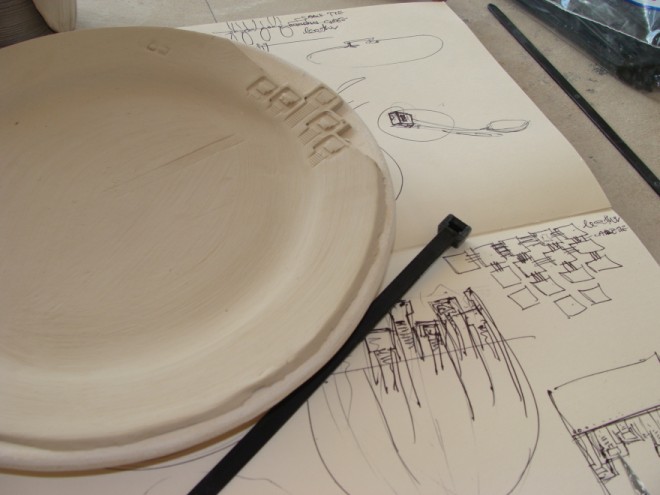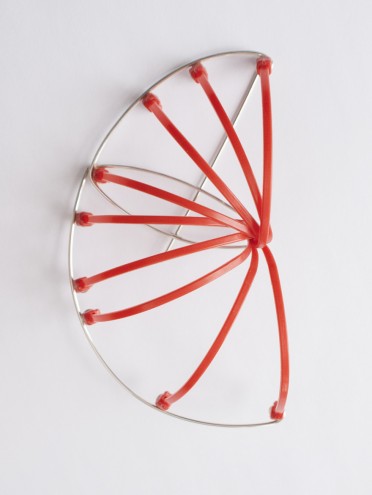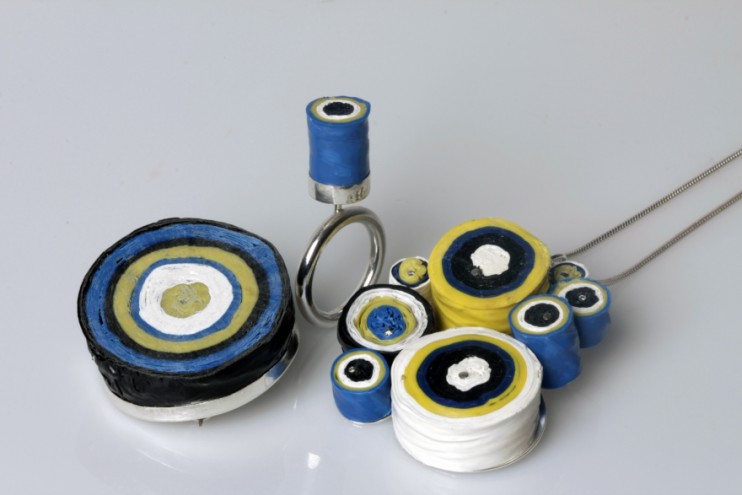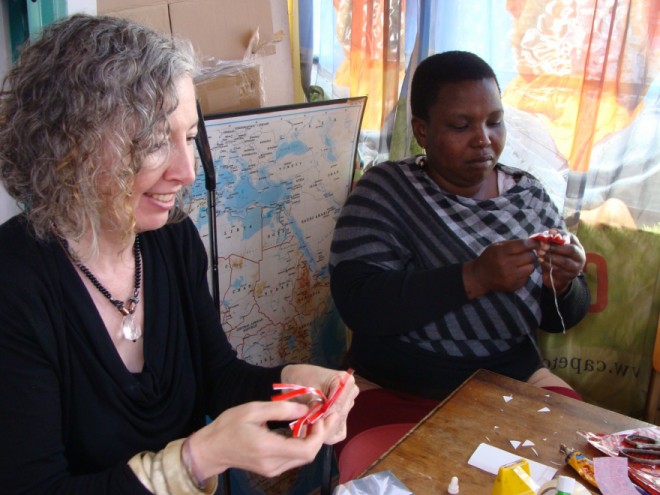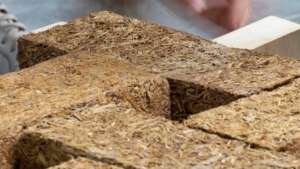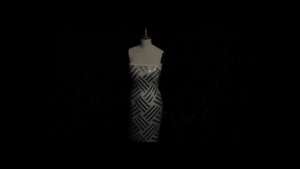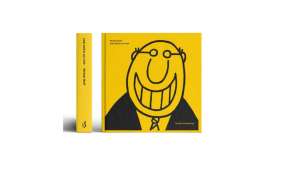From the Series
Sarah Rhodes, who has been working together with crafters in Southern Africa for many years, has seen plenty of so-called design-craft collaborations: “What happens is designers come in from abroad and they work with crafters either here or in other countries, products are produced and then they go away and it is promoted as a collaboration. Often though the designer merely finds out what materials or techniques the crafters are using and simply gives them a design to make. For me this isn’t collaboration; it is employment.”
Although she believes that there is nothing wrong with this approach, Sarah wanted to explore and test what truly constituted collaboration for her PhD research at Central Saint Martins College of Arts and Design. She wanted to discover what would happen if there was a real exchange between designer and crafter; a reciprocal process of co-creation.
I feel this approach resonates strongly with the African concept of Ubuntu where everyone has a voice in the process, where everyone feels they have a part in it. I believed that products would grow organically from this process in a much more successful and sustainable manner, she explains.
To test this hypothesis Sarah decided to look for collaborators in South Africa based on the fact that the country has an emerging design sector with several contemporary craft producers. She was introduced to Andile Dyalvane of Imiso Ceramics and the women crafters of Kunye through mutual acquaintances and set out on the journey of co-creation.
Conditions for collaboration
According to Sarah, laying the groundwork for a successful collaboration is vital. For her this meant collectively defining the project and creating a set of shared definitions. This common vocabulary is especially important in an environment where you’re working across cultures and languages.
“I think people often skip this step because they are excited about working with new people, and particularly with people from somewhere else,” she says. “They jump straight into the creative process but halfway through they realise they’ve lost sight of what they set out to do.”
Another important matter that needed to be addressed from the outset was the issue of money. “One of important things that Andile raised early on was the commercial side to the collaboration. He’s been part of several collaborations before. Setting out everyone is very excited, doing the work is great but when it comes to selling the work there is a big question mark about how to divide the profit,” she explains.
All of this was set out in a written agreement that they used as guide during the process and as a way to reflect back on their initial intentions.
More than creative connections
With the groundwork laid, the process turned to play as creative provocation: “By focusing on the process of collaboration rather than the final product, a meaningful working relationship flourished. In exploration there was no right or wrong answer allowing us the freedom to work through different product ideas and concepts that wouldn’t have occurred if there had been the usual design brief.”
During the process they found that while our globalised world provided access to many communication methods to bridge the distance, it was really during the time they spent together in studio, even just working in close proximity, that the creative juices flowed.
A productive partnership
For Andile and Sarah a serendipitous purchase of brightly coloured mini cable ties at the Milnerton market that became a springboard for a shared a creative direction.
“We both use found objects in our work. For example we both use typewriters; he creates imprints on his ceramics while I use the keys in jewellery,” Sarah says. “We realised we had a real affinity with our work and felt we had a connection not only in our work as makers but as people.”
Their joint effort resulted in the Iqhina tableware range that uses the cable tie motif from their earlier exploratory work. Drawing on Andile’s skill in ceramics and Sarah’s work with metal it made sense that he made the crockery and she cutlery. Speaking to the idea that the emergent product is more than the sum of its parts Sarah says: “In might seem quite obvious now, but if we sat down at the beginning of the project and decided to design a tableware range we would never have arrived at this.”
Part of the range is a Japanese noodle bowl and sterling silver chopstick stand, so this is a Anglo-African exchange resulting in a Eastern inspired design – now that is a truly global conversation, Sarah laughs.
For both of them the exchange has also resulted in individual projects that they’ll be pursuing further. Sarah is developing a collection of jewellery that continue the cable tie motif as well as a spin-off hybrid range of spoons while Andile is using cable ties as an alternative fixing method to sewing in a range of leather handbags.
With Kuyne it was a specific technique and their desire to add value to the pieces they create that resulted in the Inkuku range of jewellery. The collection combines the method used to create the eyes for their colourful plastic chickens along with a set of silver components made by Sarah. The range was selected to be a part of the Cape Craft and Design Institute’s annual Handmade Collection and was on show at Design Indaba Expo in 2013.
I think the growing shift towards processes of co-creation has to do with globalisation and our search for authenticity and being connected. We’re looking for something beyond the homogeneity of mass production and the handmade is so important in that, Sarah concludes.
The process culminated in the Craft of Ubuntu exhibition at Iziko Annexe in November. The exhibition not only put the resulting products on display but also the process. The Craft of Ubuntu has also received the 2014 World Design Capital stamp of approval (WDC#682) and will be on show in Stellenbosch as part of SHIFT in February 2014 where after it will travel to Central Saint Martins College of Arts and Design in London for a showing.

